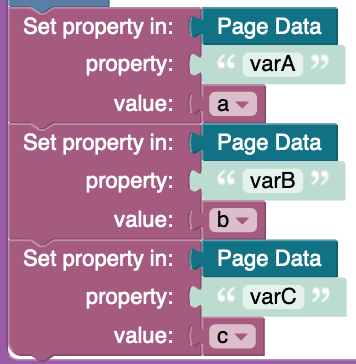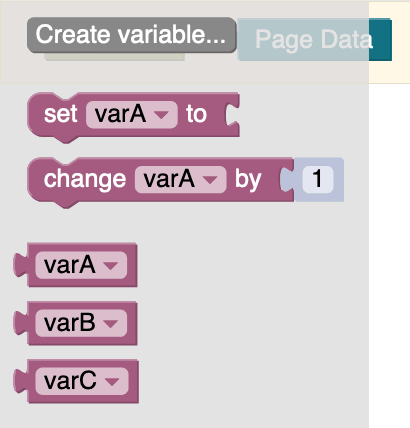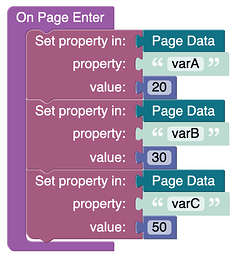Hello @Serhiy_Melnychuk,
Thank you for the reply. Sorry I didn’t get back to you sooner.
I think I basically understand now, after playing around with the available blocks a little more.
I am starting to like this way of organization:
①
Set (or retrieve from the database) the property value On Page Enter
Above: Properties varA, varB, varC being “declared” and assigned initial values when the page is loaded.
Okay, maybe varA, etc. is a confusing naming convention for properties.
Sorry, I’m not going to redo the screenshots. Just pretend I did better. 
②
Within a handler, assign the values from the properties to variables
Above: Variables a, b, c being assigned the values from properties varA, varB, varC.
Once this is done, any kind of operation can be performed on the variables without having to Get Property and Set Property at each step. It makes the “code” (the logic blocks) a lot cleaner looking.
③
Once the magical manipulation is done, transfer the values from the variables back to the properties.

They can now be accessed by other handlers in subsequent steps.
Well, it feels like a start.
Functions
Now I have a new question - what about the scope of functions?
Is there a way to make a function global?
(These too appear to be locally confined to their present handler. I have been pasting them a lot.)





